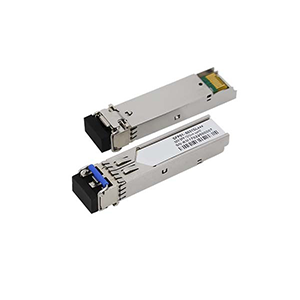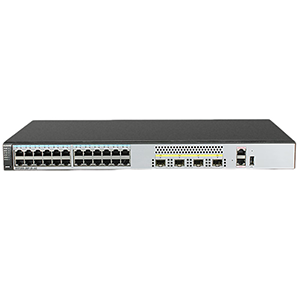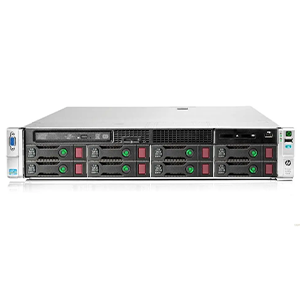I’m very excited to introduce you to 10GBASE-SR, a fiber optic standard for high-speed data transmission that supports transmission rates up to 10Gbps. In this article, I will introduce you to the basic principles and definition of 10GBASE-SR, as well as its application in optical fiber transmission. We will also discuss the basic concepts of single-mode fiber and multi-mode fiber, as well as the fiber types and transmission distance limitations used by 10GBASE-SR.
Additionally, I’ll explore single-mode fiber as an alternative to 10GBASE-SR and provide some factors to consider when choosing the right fiber type. Whether you are interested in data transfer technology or are looking for a solution to suit your networking needs, this article will provide you with valuable information.
Introduction to 10GBASE-SR
Definition and rationale:
10GBASE-SR is an optical fiber standard for data transmission that supports a transmission rate of 10Gbps. It is a short-distance transmission solution suitable for local area network (LAN) and data center applications. SR stands for “Short Reach”, indicating that it is suitable for short-distance transmission.
Basic working principle:
10GBASE-SR uses multimode fiber as the transmission medium, typically using an optical wavelength of 850 nanometers. It uses optical pulse modulation technology to convert digital data into optical pulses and transmit them through optical fibers. At the transmitting end, the data is encoded, modulated into an optical signal, and sent down the optical fiber. At the receiving end, the optical signal is received, demodulated and decoded, and restored to digital data.
Standard specifications:
The relevant standards and specifications of 10GBASE-SR are formulated by IEEE (Institute of Electrical and Electronics Engineers), and the main reference standard is IEEE 802.3ae. This standard specifies the physical layer and link layer specifications for 10 Gigabit Ethernet.
The IEEE 802.3ae standard covers a variety of 10 Gigabit Ethernet transmission media, including 10GBASE-SR, 10GBASE-LR (Long Reach), 10GBASE-ER (Extended Reach), etc. Among them, 10GBASE-SR is the standard used for short-distance transmission.
The IEEE 802.3ae standard specifies the fiber type, optical characteristics, transmission distance and interface specifications of 10GBASE-SR. It defines specific requirements for the use of 850 nanometer optical wavelength, multimode optical fiber to ensure the transmission quality and performance of optical signals.
Basic concepts of single-mode optical fiber and multi-mode optical fiber
Single mode fiber:
Single-mode fiber is an optical fiber transmission medium used for long-distance transmission and high-bandwidth requirements. Its characteristic is that light can only travel along a specific path (mode), so it is called single-mode fiber. The core size of single-mode optical fiber is usually small, generally 9 microns (μm).
working principle:
Single-mode optical fiber uses the principle of total reflection of light to transmit signals. When an optical signal is introduced into a single-mode optical fiber from the transmitting end, due to the small core size and the limitation of the propagation angle of light, the optical signal can only propagate in one mode in the optical fiber, that is, along the central axis. This propagation method reduces the propagation loss and dispersion of optical signals, making single-mode fiber suitable for long-distance transmission.
Multimode fiber:
Multimode optical fiber is also an optical fiber transmission medium, suitable for medium and short distance transmission and common LAN applications. It is characterized by the fact that light can travel along multiple paths (modes), hence the name multimode fiber. Multimode fiber generally has a larger core size, typically 50 or 62.5 microns (μm).
working principle:
Multimode fiber allows light signals to propagate in multiple modes within the fiber core because the light propagates at a larger angle due to the larger core size. This propagation method causes multi-mode dispersion and loss of optical signals during the transmission process, which limits the transmission distance and bandwidth of multi-mode optical fiber. Therefore, multimode fiber is often used for data transmission over shorter distances, such as data communications in local area networks.
Fiber types for 10GBASE-SR
Multimode fiber:
10GBASE-SR uses multimode fiber as the transmission medium. Multimode fiber has a larger core size, typically 50 or 62.5 micrometers (μm), allowing light signals to propagate in multiple modes. In multimode fiber, 10GBASE-SR works by using optical pulse modulation technology to convert digital data into optical pulses and transmit them through the fiber.
The transmission performance of 10GBASE-SR in multimode fiber is affected by inter-mode dispersion and loss. Since different modes of optical signals propagate at different speeds during transmission, it will cause signal dispersion, that is, different parts of the signal arrive at the receiving end at different times, which may affect the integrity and reliability of the data. In addition, multimode fiber also has losses caused by inter-mode coupling, which also limits the transmission distance of 10GBASE-SR.
Single mode fiber:
10GBASE-SR does not support single-mode fiber. Single-mode fiber uses a smaller core size (typically 9 microns), allowing light signals to propagate in only a single mode. Since single-mode fiber has smaller core size and lower dispersion characteristics, it is suitable for long-distance transmission. Unlike multimode fiber, 10GBASE-SR was not designed and specified for single-mode fiber and therefore cannot be directly used for single-mode fiber transmission.
Compatibility and limiting factors:
Because 10GBASE-SR uses multimode fiber, it needs to be used with transmission equipment that supports the same fiber type. This means that the fiber optic interfaces at the transmitter and receiver must be compatible with multimode fiber to ensure correct optical signal transmission.
It should be noted that due to the transmission characteristics limitations of multi-mode optical fiber, the transmission distance of 10GBASE-SR is relatively short, usually within a few hundred meters. If high-speed data transmission is required over longer distances, single-mode fiber and other suitable fiber standards may need to be considered.
Transmission distance and bandwidth limitations of 10GBASE-SR
Transmission distance of multimode fiber:
The transmission distance range supported by 10GBASE-SR in multimode fiber is typically several hundred meters. The specific transmission distance is affected by many factors, including fiber quality, connector quality, fiber attenuation and dispersion, etc. Typically, using standard 50 micron (μm) multimode fiber, the transmission distance of 10GBASE-SR can reach approximately 300 meters. For 62.5 micron (μm) multimode fiber, the transmission distance is shorter, usually around 33 meters.
It should be noted that as the transmission distance increases, the dispersion effect in multimode optical fiber will cause increased signal distortion and attenuation, thus affecting the reliability and integrity of the data. Therefore, to ensure transmission over longer distances, other fiber types may be required, such as single-mode fiber.
Bandwidth requirements:
10GBASE-SR provides a bandwidth of 10 Gbps (gigabits per second) in multimode fiber, which is 10 Gigabit speeds. This high-bandwidth transfer rate makes it ideal for meeting the needs of high-performance networks such as data centers, server-to-server connections, and local area networks.
The bandwidth of 10GBASE-SR meets the requirements for large-capacity data transmission and can support high-definition video, large-scale data transmission and other bandwidth-intensive applications. It provides significant improvements in network performance and response time, providing users with faster data transfer speeds and higher network throughput.
Single-mode fiber alternatives
Single-mode fiber standards:
For long-distance transmission needs, single-mode fiber is a common alternative. Single-mode fiber uses a smaller core size (typically 9 microns), allowing light signals to propagate in only a single mode. The following are two common single-mode fiber standards:
-
10GBASE-LR: This is a single-mode fiber standard for long-distance transmission at 10 Gbps rates. It supports data transmission in single-mode optical fiber, and the transmission distance can reach about 10 kilometers.
-
40GBASE-LR4: This is a single-mode fiber standard for long-distance transmission at 40 Gbps rates. It uses four wavelengths of optical signals for transmission, and the transmission distance can reach about 10 kilometers.
These single-mode fiber standards are suitable for scenarios that require high-speed data transmission over longer distances, such as wide area network (WAN) connections, fiber optic backbone networks, and long-distance server-to-server connections.
Limitations of multimode fiber:
In some cases, the bandwidth limitations of multimode fiber may result in the need to use singlemode fiber instead of 10GBASE-SR. Although 10GBASE-SR provides a high-speed 10 Gbps transmission rate, in multi-mode optical fiber, its transmission distance is relatively short, usually within a few hundred meters, based on the limitations of multi-mode dispersion and loss.
If high-speed data transmission is required over longer distances, or you need to connect to a device or network over a long distance, single-mode fiber may be a better choice. Single-mode optical fiber has a long transmission distance, up to several kilometers, has low dispersion and loss characteristics, and is suitable for long-distance transmission and high bandwidth requirements.
It should be noted that the cost of single-mode fiber is usually higher and is not suitable for short-distance transmission. Therefore, when selecting fiber type, transmission distance, bandwidth requirements and economic factors need to be considered comprehensively.
How to choose the appropriate fiber type
Selecting the appropriate fiber type requires consideration of several factors, including application requirements, transmission distance, bandwidth requirements and cost. Here are some considerations and suggestions:
Application requirements considerations:
- Transmission distance: Determine the distance range that needs to be covered. If long distance transmission is required, single-mode fiber may be more suitable; for shorter distances, multi-mode fiber may be more cost-effective.
- Bandwidth requirements: Determine the data transfer rates that need to be supported. High bandwidth requirements often require the selection of higher specification fiber standards, such as 10GBASE-SR or single-mode fiber standards.
- Cost: Evaluate project budget and cost requirements. Different types of optical fibers and standards vary in cost, and performance requirements and economic factors need to be considered.
Technology trends:
- Trends in fiber optic technology: Understanding current and future fiber optic technology trends is helpful in selecting the appropriate fiber type. For example, as data demand increases, new fiber optic standards and technologies continue to emerge, providing higher bandwidth and longer transmission distances. Understanding technology trends can help you choose a more future-proof and scalable fiber optic solution.
- Compatibility and scalability: Consider fiber optic compatibility and scalability. Choosing a widely adopted fiber optic standard ensures compatibility with other devices and systems and provides greater flexibility for future network expansion.
It should be noted that the selection of fiber type should be a comprehensive consideration of multiple factors. In practice, it may be necessary to work with fiber suppliers, systems integrators or network experts to obtain the best advice and solutions for specific needs.
Summarize:
When choosing the right fiber type, you need to consider factors such as transmission distance, bandwidth requirements, and cost. Although 10GBASE-SR has its unique advantages over multimode fiber, in some cases, single-mode fiber may be a better choice, especially for long-distance transmission needs.
As technology continues to develop, fiber optic technology continues to advance, and higher speed and higher bandwidth solutions may appear in the future. Understanding current and future technology trends is important to making informed choices. I hope this article can help you better understand 10GBASE-SR and fiber optic transmission technology, and provide you with guidance in choosing the appropriate fiber type.
- What is 10GBASE-SR?
- What is the length of 10Gb SR?
- What is SFP-10G-SR for?
- Is 10GBASE-SR copper or fiber?
- Is SR single-mode or multimode?
- What is X2 10GB sr?
- What is SR in Ethernet?
- Is 10GBASE-sr faster than 1000BASE sx?
-
100G CFP SR10 850nm 150m Transceiver Module
-
100G CFP2 SR10 850nm 150m Transceiver Module
-
100G QSFP28 SR4 850nm 100m Transceiver Module
-
400G OSFP SR4 Flat Top 850nm 30m Transceiver Module
-
400G OSFP SR8 850nm 100m OM3 Transceiver Module
-
400G QSFP-DD SR4 BIDI 850nm Transceiver Module
-
400G QSFP-DD SR8 850nm 100m Transceiver Module
-
400G QSFP112 SR4 PAM4 850nm 100m Transceiver Module
-
40G QSFP+ CSR4 MTP Optical Transceiver Module




